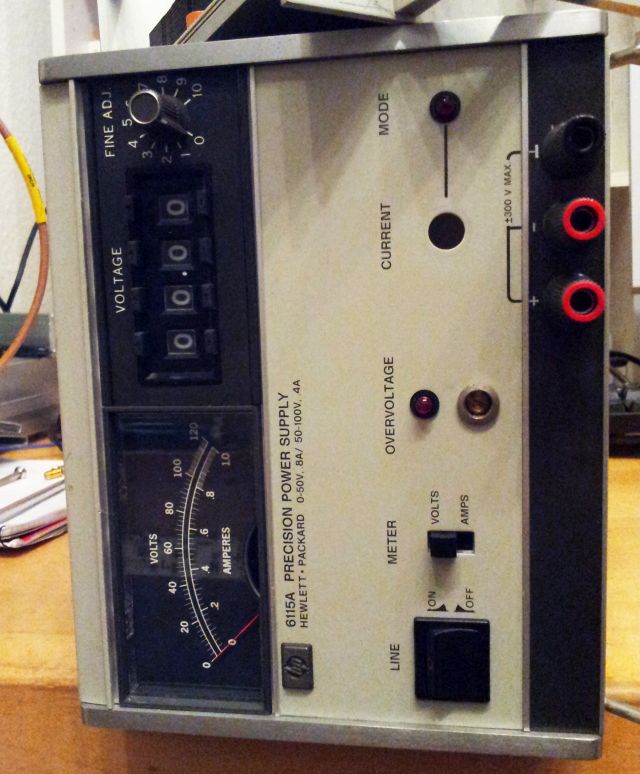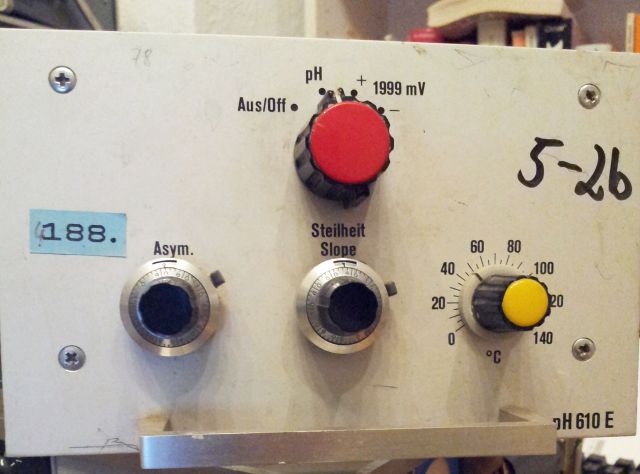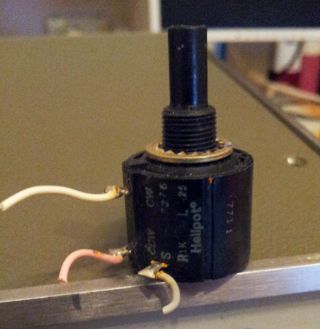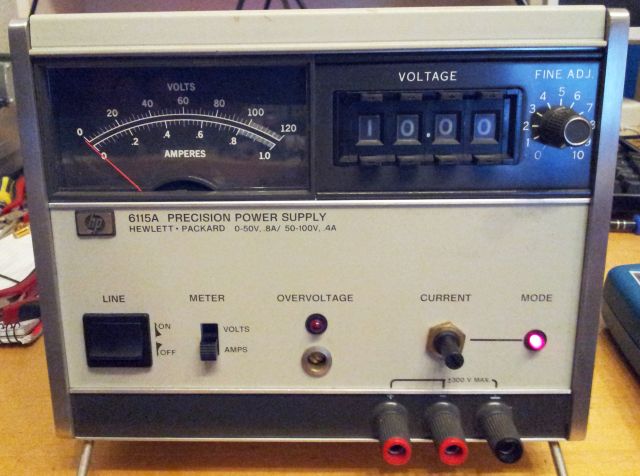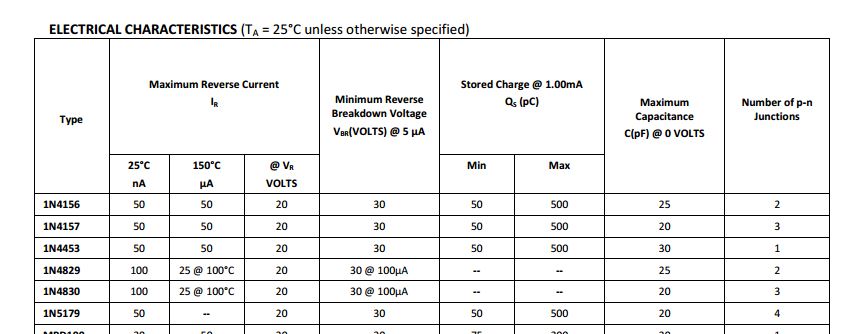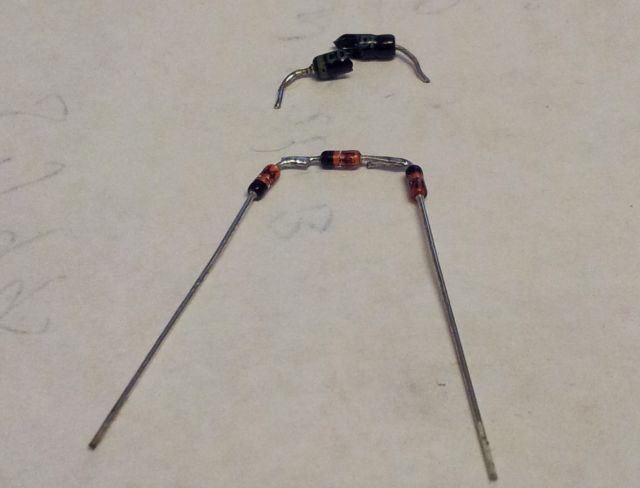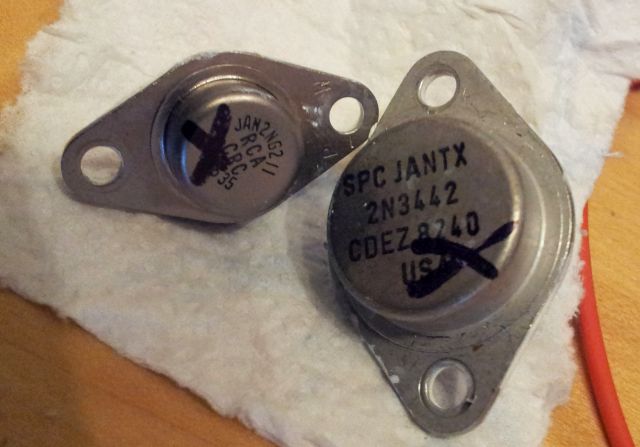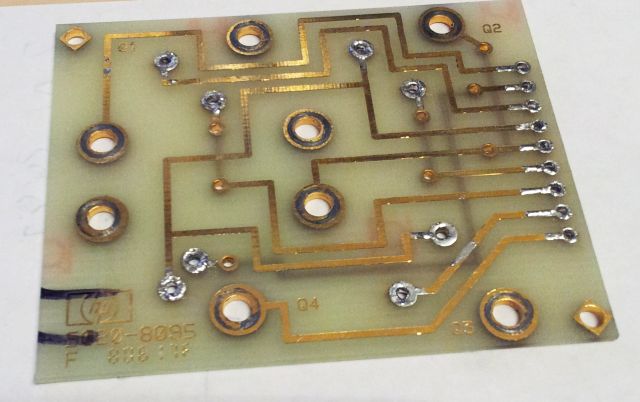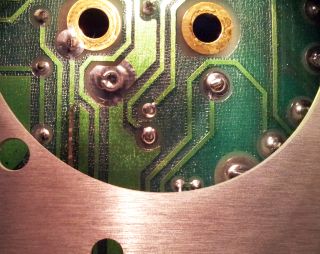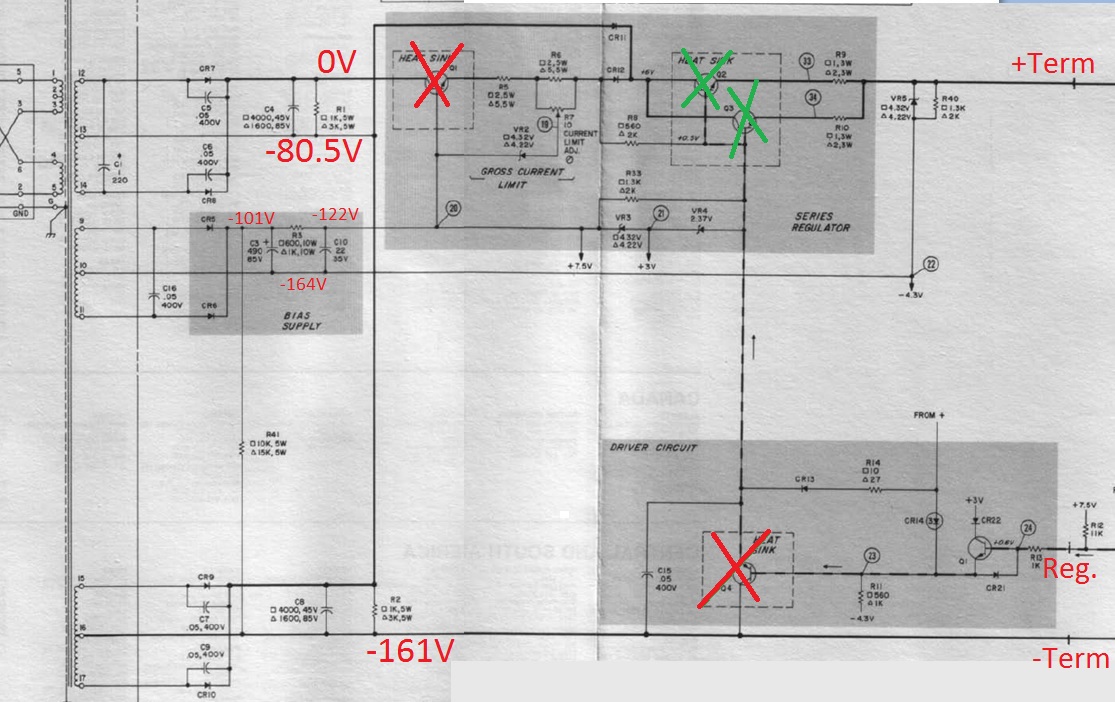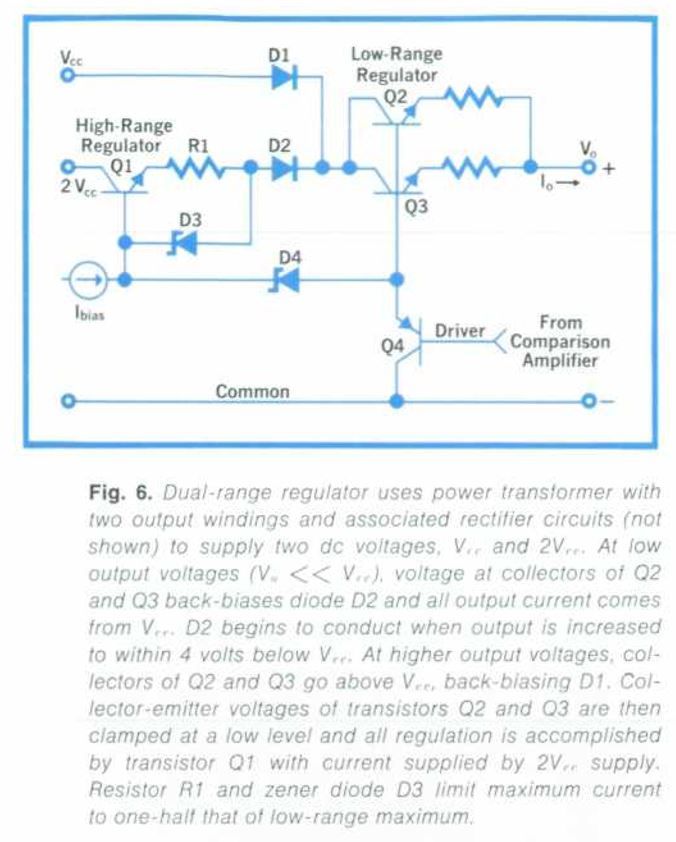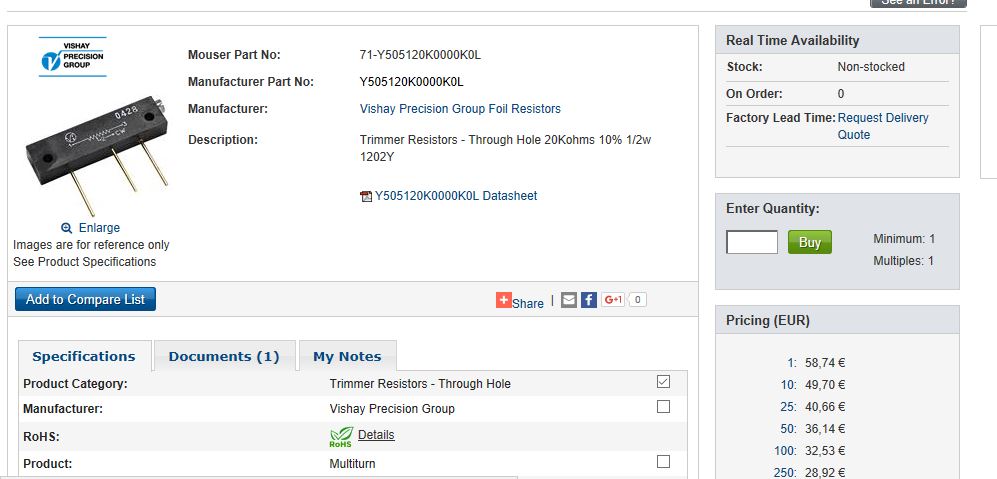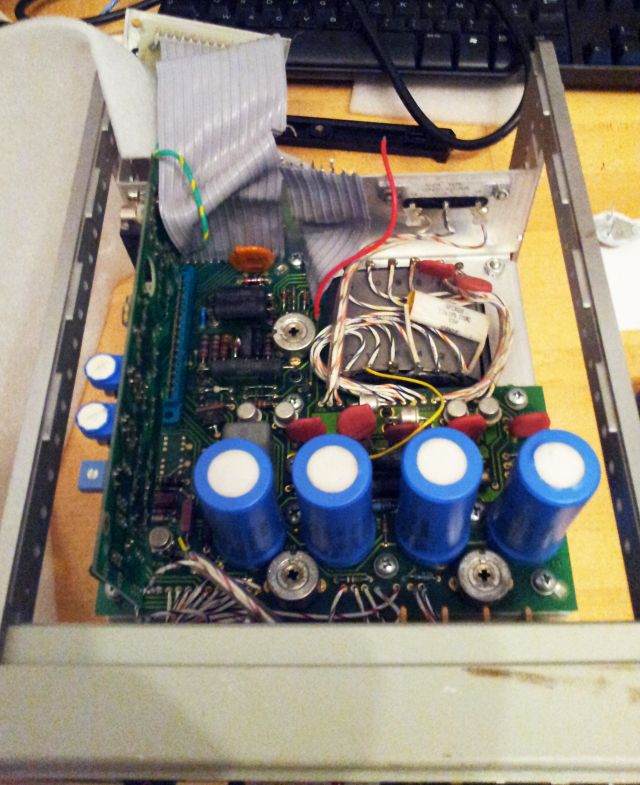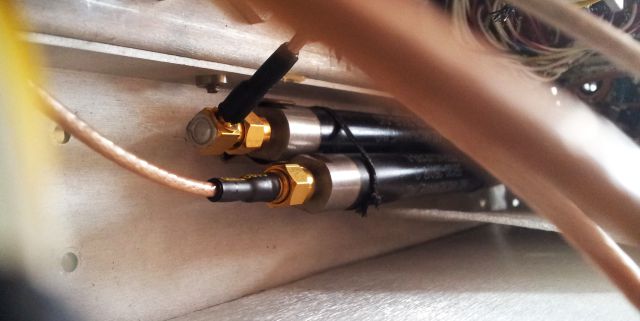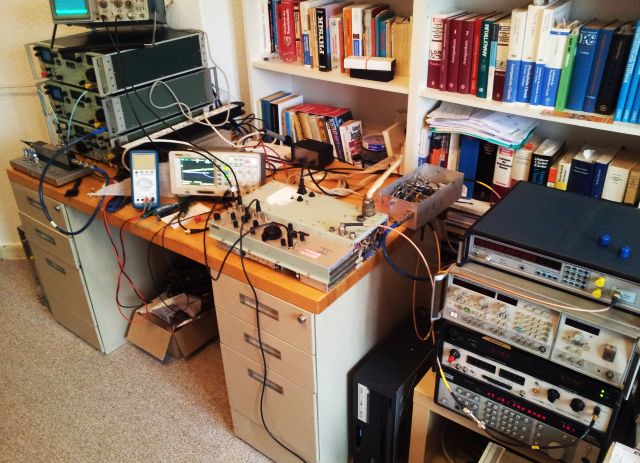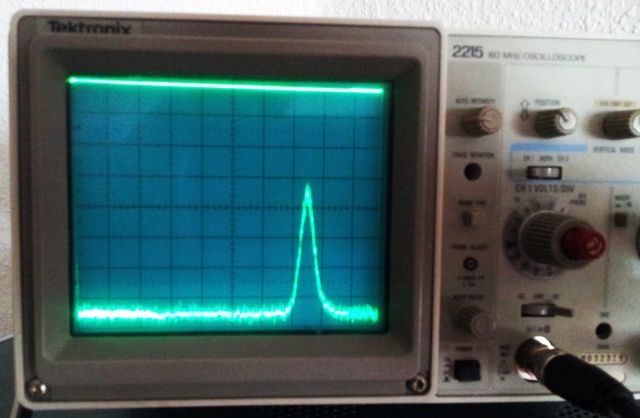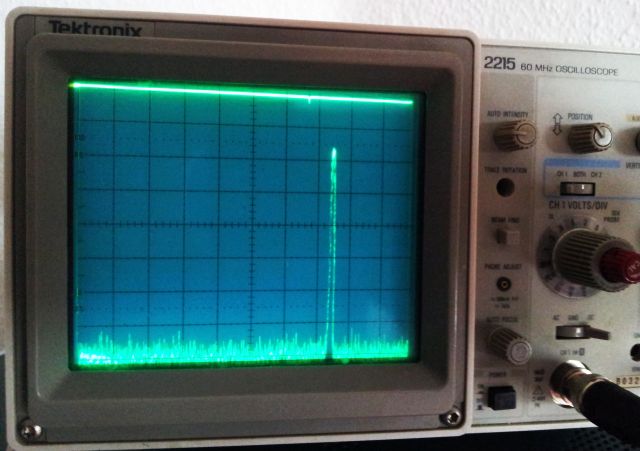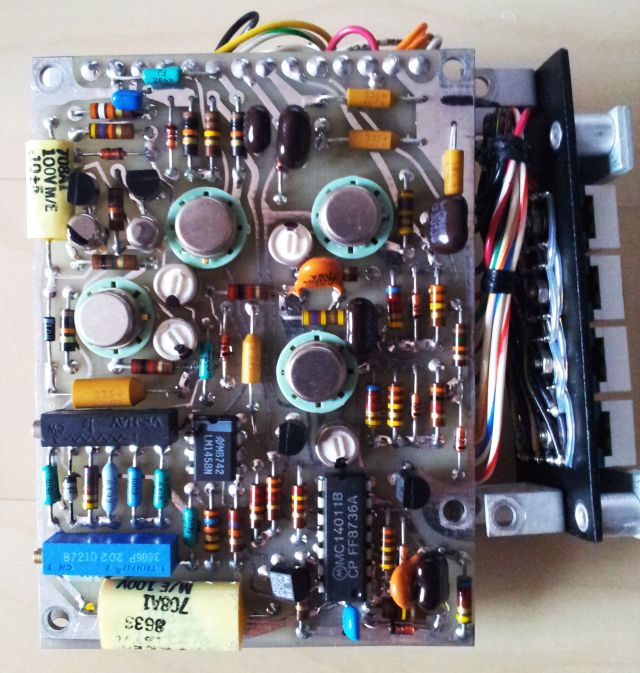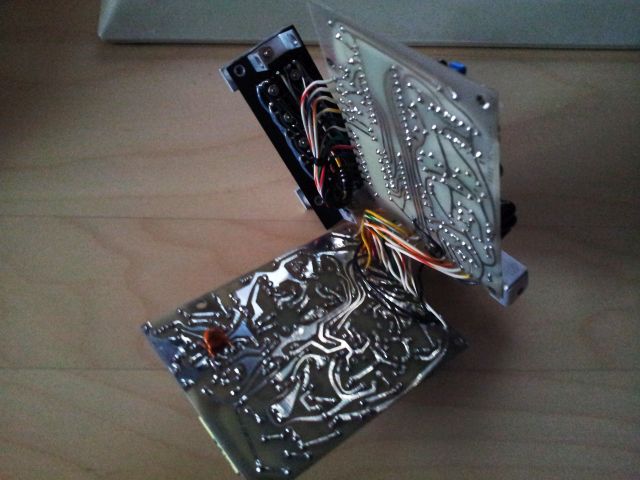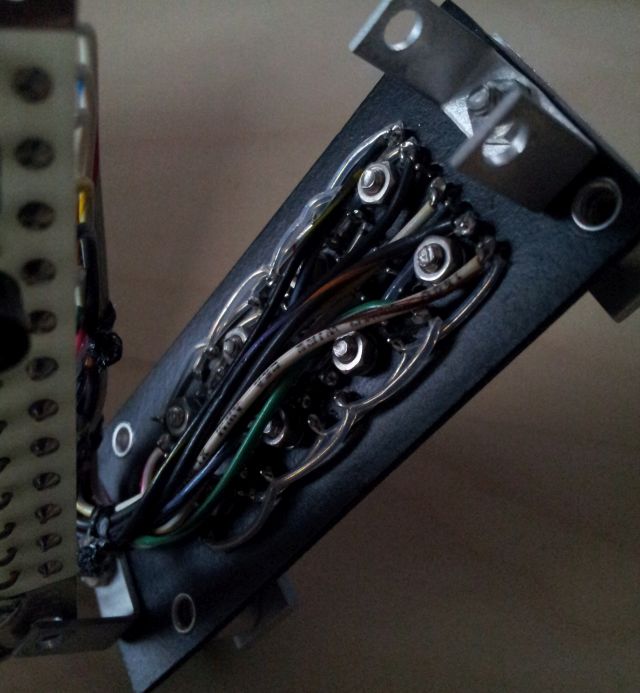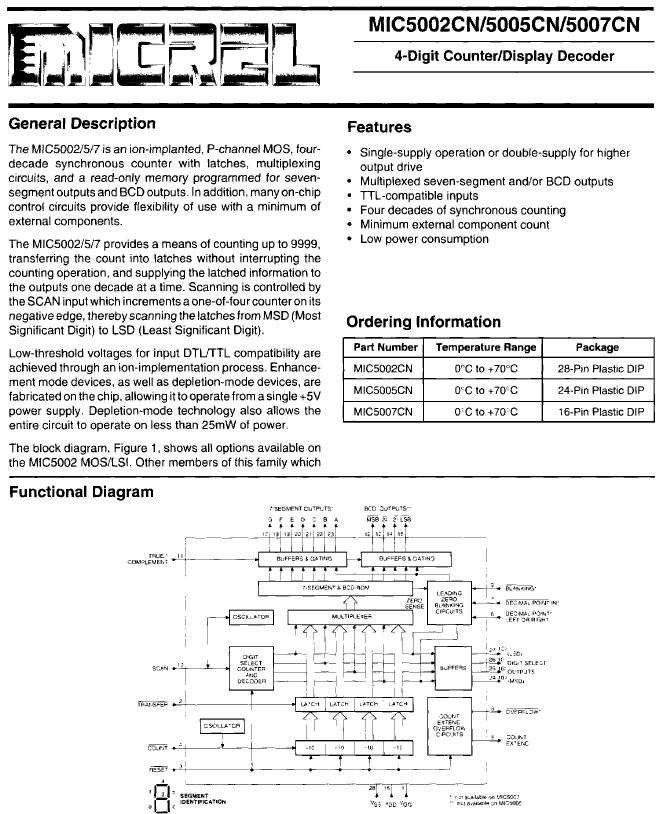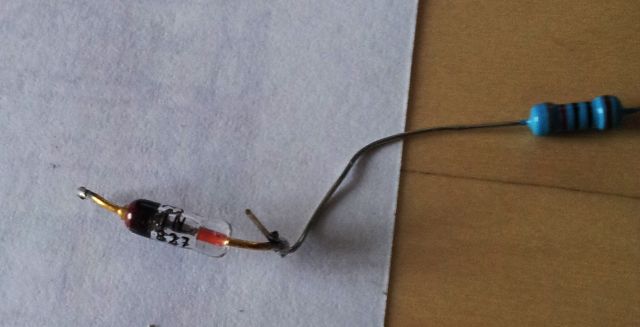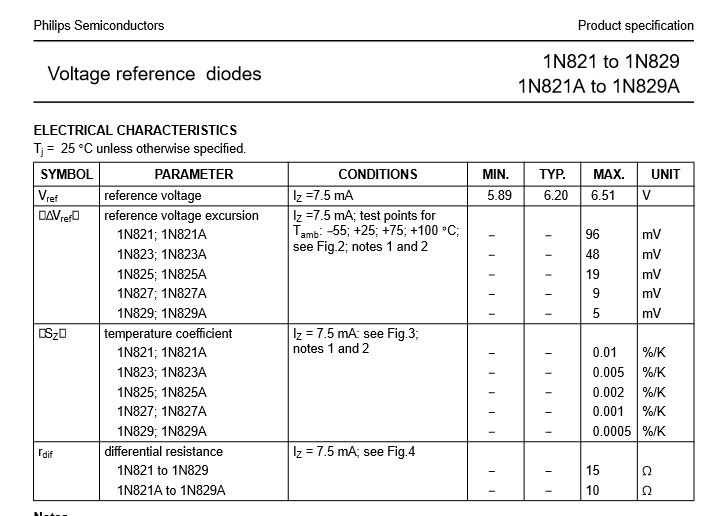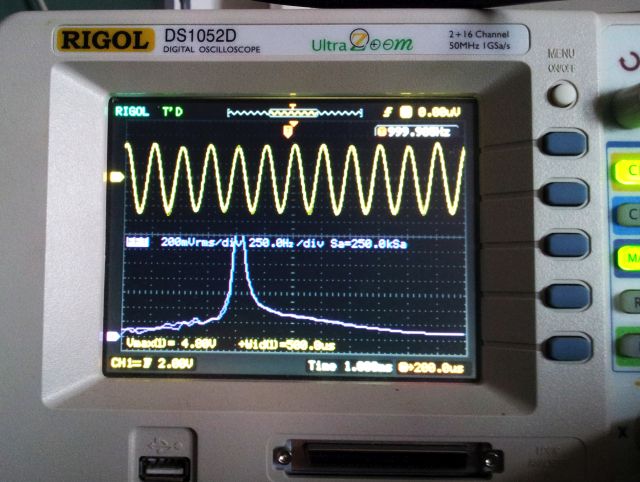The HP 6115A is a really great power supply, 0-50 V @0.8 Amp, 50-100 V @0.4 Amp, 0.0005% load and line regulation, 0.01% current regulation, 100 uV p-p ripple, 0.0015% drift over 8 hours, 0.025 + 1 mV accuaracy of output voltage, all in all, challenging design objectives still today. Unfortunately, the unit discussed here has not any of these characteristics, it is dead, and missing the current adjustment pot.
At least, it is a reasonable clean unit, and at a first glance, nothing major, like a completely melted board or smoking transformer. Judging from the soldering, someone already tried to fix it but gave up mid-way. Sure, I will not give up with this supply too soon.
First things first – the current pot, a 10 turn 1 k, HP part 2100-1864 (Bourns 3540S): missing. Looking around in my parts collection – but no luck. At the very bottom of a stack of old electronics junk, a WTW 610 pH meter from the 1970s. This is used to convert pH electrode signals, to proper voltages, but even more important, it has 2 pcs 1k Helipot 7276 series 1 k pots. These are 20 ppm tempco, even better than the Bourns (50 ppm).
With the 1 kOhm pot fitted, still no function. About 60 V at the output, and the current limit LED lit, regardless of current or voltage setting.
Looking around inside – a few issues found. There are several uncommon parts, like, a STB523 = 1N4830 voltage stabilizer, which is more or less a stack of 3 Si diodes. These parts are not commonly available anymore, so I replaced the defect regulator diode with a series assembly of three 1N4148 diodes.
Found a few more issues, several blown Zener diodes, all around the Q1-Q4 transistors. This is not good, because it may indicate some blown power transistors. And if fact, it did not take long to find out that Q1 has a full B-E-C short, and Q4 is C-B short, E-C, E-B open. No wonder that this disturbed the bias network Zeners, VR3, VR4.
The transistors, 2N3442 NPN (Q1-Q3), and 2N6211 (PNP, high voltage power TO-66), at least the latter, not quite common – on order from an xbay seller in Greece, 5 EUR a piece of old and obsolete part, OK!
The power transistor board was an awful mix of bad soldering and flux, finally, cleaned and most of the solder removed.
Found another defect – no voltage on C8, one of the main capacitors. Reason: a blown trace, from tap 16 of the transformer. Temporary fix with a yellow wire….
After some repairs, at least the basic voltages and supplies are up and working again, all capacitors tested, and working fine. Also reviewed the regulator board and its voltages (not shown in below diagram, red cross means dead part removed, green cross means part absent but tested good), all is fine and working.
Note the working principle of the series pass regulator – it is a dual range setup, with a high voltage regulator, Q1 and the low voltage regulator Q2/Q3, all driven by the common Q4. Diodes CR11 and CR12 (a dual-diode element) is directing the current from the appropriate transformer DC supply (2 equal DC voltages of about 80 Volts are generated from two separate windings).
Apart from a 1N829 0.0005% tempco temperature compensate diode, there is another remarkable part used in the circuit, a 10 ppm 10 turn trimmer – not quite cheap, and still available today!
This is the current state of the instrument, waiting for the spare transistors, before I can put it back together, and hopefully, put it back in service.

